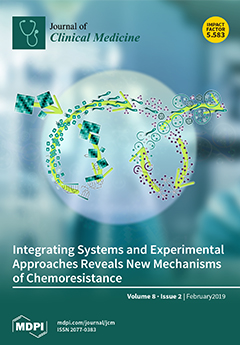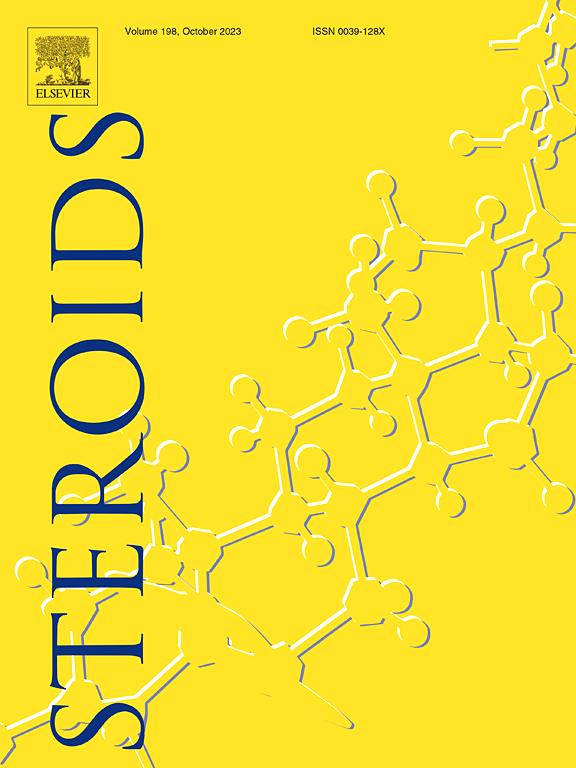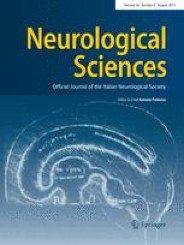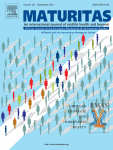Anti-Depressant
How to submit an article:
- Registered users can submit any published journal article that has a unique DOI (Digital Object Identifier) name or link to Research Hub.
- For example, you can paste the full DOI link:
https://doi.org/10.1109/5.771073or just the DOI name:10.1109/5.771073into the field above and click submit. - The person who is first to submit a valid article to Research Hub will forever be credited for it, and every article submission earns you +6 Research Points.
Published research studies are articles that present the findings of original research that has undergone a peer-review process and has been made publicly available in scholarly journals, books or other media.

Pathophysiology of Depression: Stingless Bee Honey Promising as an Antidepressant
2022 Aug 10 Molecules Zakaria FH, Samhani I, Mustafa MZ, Shafin N
Review Article Anti-Depressant Depression HoneyDepression, a prevalent and debilitating disorder, necessitates novel treatments beyond conventional drugs. Stingless bee honey, rich in antioxidants, emerges as a potential antidepressant candidate, explored comprehensively through monoamine, inflammatory, and neurotrophin hypotheses.

Anti-Depressant Properties of Crocin Molecules in Saffron
2022 Mar 23 Molecules Siddiqui SA, Ali Redha A, Snoeck ER, Singh S, Simal-Gandara J, Ibrahim SA, et al.
Experimental Study Review Article Depression SaffronSaffron and its bioactive molecules, notably crocins, have been found to be as effective as common antidepressants in treating depression disorders.
A metabolomic study on the anti-depressive effects of two active components from Chrysanthemum morifolium
2020 Jan 01 Artificial Cells, Nanomedicine, and Biotechnology Liu T, Zhou N, Xu R, Cao Y, Zhang Y, Liu Z, et al.
Experimental Study Animal Study Depression Chrysanthemum Naringenin ApigeninChrysanthemum morifolium, Naringenin and Apigenin can alleviate depression-like behavior by interfering with specific metabolic pathways.

Acupuncture for Depression: A Systematic Review and Meta-Analysis
2019 Jul 31 Journal of Clinical Medicine Armour M, Smith C, Wang LQ, Naidoo D, Yang GY, MacPherson H, et al.
Acupuncture showed clinically-relevant benefits in reducing the severity of depression at the end of treatment compared to sham acupuncture, usual care, and as an adjunct treatment to anti-depressant medication. The high risk of bias for participant blinding in the majority of studies and Chinese population-based studies mean these results must be interpreted cautiously. Both the total number of treatments (median of 18 treatments) and the frequency of treatment (once per week in English speaking countries and 3.5 per week in China) may play a role in depression-related outcomes.
Systematic Review Meta-Analysis Mental Health Depression
Timosaponin AIII: A novel potential anti-tumor compound from Anemarrhena asphodeloides
2018 Dec Steroids Han FY, Song XY, Chen JJ, Yao GD, Song SJ
Timosaponin AIII as an effective constituent isolated from Anemarrhena asphodeloides Bge., has been proved to possess ability to induce cell death in various cancer cells. The underlying molecular mechanisms include timosaponin AIII-induced apoptosis, invasion inhibition and MDR reversal, and they involve in some complicated and interlaced signaling pathways and also protects some cancer cells from cell death through protective autophagy against apoptosis.
Review ArticleResearch insights are moderated by the Research Hub team and offer an at-a-glance overview of interesting research findings.

2022 Molecules
Depression, a prevalent and debilitating disorder, necessitates novel treatments beyond conventional drugs. Stingless bee honey, rich in antioxidants, emerges as a potential antidepressant candidate, explored comprehensively through monoamine, inflammatory, and neurotrophin hypotheses.
Review Article Depression Honey
Pathophysiology of Depression: Stingless Bee Honey Promising as an Antidepressant
Zakaria FH, Samhani I, Mustafa MZ, Shafin N

2022 Molecules
Saffron and its bioactive molecules, notably crocins, have been found to be as effective as common antidepressants in treating depression disorders.
Experimental Study Depression Saffron
Anti-Depressant Properties of Crocin Molecules in Saffron
Siddiqui SA, Ali Redha A, Snoeck ER, Singh S, Simal-Gandara J, Ibrahim SA, et al.
2020 Artificial Cells, Nanomedicine, and Biotechnology
Chrysanthemum morifolium, Naringenin and Apigenin can alleviate depression-like behavior by interfering with specific metabolic pathways.
Experimental Study Apigenin Chrysanthemum Depression Naringenin
A metabolomic study on the anti-depressive effects of two active components from Chrysanthemum morifolium
Liu T, Zhou N, Xu R, Cao Y, Zhang Y, Liu Z, et al.

2017 Neurological Sciences
Shiatsu is a safe and potentially useful alternative approach for refractory headache.
Randomised Controlled Trial
Single-blind, randomized, pilot study combining shiatsu and amitriptyline in refractory primary headaches
Villani V, Prosperini L, Palombini F, Orzi F, Sette G.
Review Articles
Review articles summarise and critically evaluate the current state of research on a specific topic or field by synthesising multiple primary research studies.

Pathophysiology of Depression: Stingless Bee Honey Promising as an Antidepressant
2022 Aug 10 Molecules Zakaria FH, Samhani I, Mustafa MZ, Shafin N
Review Article Anti-Depressant Depression HoneyDepression, a prevalent and debilitating disorder, necessitates novel treatments beyond conventional drugs. Stingless bee honey, rich in antioxidants, emerges as a potential antidepressant candidate, explored comprehensively through monoamine, inflammatory, and neurotrophin hypotheses.

Anti-Depressant Properties of Crocin Molecules in Saffron
2022 Mar 23 Molecules Siddiqui SA, Ali Redha A, Snoeck ER, Singh S, Simal-Gandara J, Ibrahim SA, et al.
Experimental Study Review Article Depression SaffronSaffron and its bioactive molecules, notably crocins, have been found to be as effective as common antidepressants in treating depression disorders.

Acupuncture for Depression: A Systematic Review and Meta-Analysis
2019 Jul 31 Journal of Clinical Medicine Armour M, Smith C, Wang LQ, Naidoo D, Yang GY, MacPherson H, et al.
Acupuncture showed clinically-relevant benefits in reducing the severity of depression at the end of treatment compared to sham acupuncture, usual care, and as an adjunct treatment to anti-depressant medication. The high risk of bias for participant blinding in the majority of studies and Chinese population-based studies mean these results must be interpreted cautiously. Both the total number of treatments (median of 18 treatments) and the frequency of treatment (once per week in English speaking countries and 3.5 per week in China) may play a role in depression-related outcomes.
Systematic Review Meta-Analysis Mental Health Depression
Timosaponin AIII: A novel potential anti-tumor compound from Anemarrhena asphodeloides
2018 Dec Steroids Han FY, Song XY, Chen JJ, Yao GD, Song SJ
Timosaponin AIII as an effective constituent isolated from Anemarrhena asphodeloides Bge., has been proved to possess ability to induce cell death in various cancer cells. The underlying molecular mechanisms include timosaponin AIII-induced apoptosis, invasion inhibition and MDR reversal, and they involve in some complicated and interlaced signaling pathways and also protects some cancer cells from cell death through protective autophagy against apoptosis.
Review Article
Herbal medicine (Gan Mai Da Zao decoction) for depression: A systematic review and meta-analysis of randomized controlled trials
2014 Dec Maturitas Jun JH, Choi TY, Lee JA, Yun KJ, Lee MS
In summary, our systematic review and meta-analysis failed to provide evidence of the superiority of GMDZ decoction over anti-depressant therapies for major depression, post-surgical depression, or depression in the elderly, although there was evidence of an effect in post-stroke depression.
Systematic Review Meta-Analysis Gan Mai Da Zao TangClinical Trials
Clinical trials are research studies that involve people and are conducted to evaluate the safety and efficacy of new treatments or interventions, such as drugs, medical devices, or behavioural therapies.
Study Protocols
Published study protocols are detailed plans that outline the objectives, methodology, statistical analyses, and organisation of a research study that have been made publicly available for others to review and use as a reference.
Presentation Slides

Review Article
Depression, a prevalent and debilitating disorder, necessitates novel treatments beyond conventional drugs. Stingless bee honey, rich in antioxidants, emerges as a potential antidepressant candidate, explored comprehensively through monoamine, inflammatory, and neurotrophin hypotheses.
Zakaria FH, Samhani I, Mustafa MZ, Shafin N

Experimental Study
Saffron and its bioactive molecules, notably crocins, have been found to be as effective as common antidepressants in treating depression disorders.
Siddiqui SA, Ali Redha A, Snoeck ER, Singh S, Simal-Gandara J, Ibrahim SA, Jafari SM

Experimental Study
Chrysanthemum morifolium, Naringenin and Apigenin can alleviate depression-like behavior by interfering with specific metabolic pathways.
Liu T, Zhou N, Xu R, Cao Y, Zhang Y, Liu Z, Zheng X, Feng W

Randomised Controlled Trial
Shiatsu is a safe and potentially useful alternative approach for refractory headache.
Villani V, Prosperini L, Palombini F, Orzi F, Sette G.
Executive Summary
Write an executive summary in the form of a blog article on the topic of "Research into Chinese medicine treatment for Anti-Depressant" summarising the research below and using language that can be easily understood by patients and avoiding medical jargon using a professional and caring tone of voice.
Write an executive summary in the form of a blog article on the topic of "Researched Chinese medicine treatments for Anti-Depressant" summarising the research below in an objective and easy to understand way, and using language that can be easily understood by patients. Group the article into Chinese medicine treatments first, followed by nutrition and other treatments. Avoid using medical jargon and use a professional and caring tone of voice.
Write me a concise but easy to understand executive summary on the topic of "Chinese medicine treatments for Anti-Depressant" based on the following research that I will give you. Your summary should be 2 paragraphs long in Australian English spelling and include references to the studies.
A Review Article published in 2022 in the journal Molecules found that Depression, a prevalent and debilitating disorder, necessitates novel treatments beyond conventional drugs. Stingless bee honey, rich in antioxidants, emerges as a potential antidepressant candidate, explored comprehensively through monoamine, inflammatory, and neurotrophin hypotheses. This comprehensive review delves into the urgent need for safer and more effective depression treatments, considering the limitations of conventional drugs. The focus is on Stingless Bee Honey (SBH), recognized for its high antioxidant content, and its potential as an antidepressant is explored through the lenses of the monoamine, inflammatory, and neurotrophin hypotheses. Stingless bee honey's potential as an antidepressant is examined in the context of its antioxidant richness, offering a new avenue for addressing depression beyond conventional drug approaches. The review highlights the importance of exploring alternative medicines, such as SBH, for safer and more efficacious depression treatments.
A Experimental Study published in 2022 in the journal Molecules found that Saffron and its bioactive molecules, notably crocins, have been found to be as effective as common antidepressants in treating depression disorders. The methodology of the research centered on the incredible therapeutic properties of saffron, more specifically its bioactive molecules known as crocins. These molecules were singled out as they have shown a capacity to inhibit monoamine oxidase type A and B. The researchers also conducted experiments with saffron petal extracts, observing their impact on contractile response in electrical field stimulation. There were further investigations into saffron's ability to inhibit the reuptake of monoamines, display -methyl-d-aspartate antagonism, and enhance brain-derived neurotrophic factor signaling. The discussion of the results highlighted the effectiveness of saffron and its crocins in treating depressive disorders. From several experimental studies, it became apparent that saffron and crocins might perform similarly to fluoxetine and imipramine, both widely accepted antidepressant drugs. As such, the paper suggests that these natural elements found in saffron could offer an alternative treatment method for depression. The limitations, however, as highlighted in the study, were issues surrounding stability and delivery of the herbal treatment.
A Experimental Study published in 2020 in the journal Artificial Cells, Nanomedicine, and Biotechnology found that Chrysanthemum morifolium, Naringenin and Apigenin can alleviate depression-like behavior by interfering with specific metabolic pathways. In this study, the researchers decided to evaluate the impact of Chrysanthemum morifolium, Naringenin, and Apigenin on depression-like behaviors instigated specifically by corticosterone. These substances, which are the primary active ingredients in the aqueous extract of C. morifolium and are used in Traditional Chinese Medicine, were analyzed regarding their therapeutic properties for depression. Researchers analyzed behavior and biochemical indicators tied to depression to understand the effects of these substances on a modeled depression scenario. In the discussion of results, the authors highlight that these substances demonstrated antidepressant properties through their interference with certain metabolic pathways. These pathways include tryptophan metabolism, arginine and proline metabolism, citrate cycle, niacin and niacinamide metabolism, phenylalanine metabolism, and alanine, aspartate and glutamate metabolism. The effects were further explained on the basis of material and energy metabolism. Moreover, it was noted that Naringenin could potentially be used as a replacement for Chrysanthemum morifolium with similar beneficial outcomes; while Apigenin paralleled the function of other positive drugs targeting depression.
A Randomised Controlled Trial published in 2017 in the journal Neurological Sciences found that Shiatsu is a safe and potentially useful alternative approach for refractory headache. Although all the three groups improved in terms of headache frequency, visual analogue scale score, and number of pain killers, there was no between-group difference in primary endpoint. Shiatsu (alone or in combination) was superior to amitriptyline in reducing the number of pain killers taken per month. Seven (19%) subjects reported adverse events, all attributable to amitriptyline, while no side effects were related with shiatsu treatment. Shiatsu is a safe and potentially useful alternative approach for refractory headache. However, there is no evidence of an additive or synergistic effect of combining shiatsu and amitriptyline. These findings are only preliminary and should be interpreted cautiously due to the small sample size of the population included in our study.
Moderation Tools
Topic
Sign In
Users not signed in are limited to viewing the 5 most recent items of content.